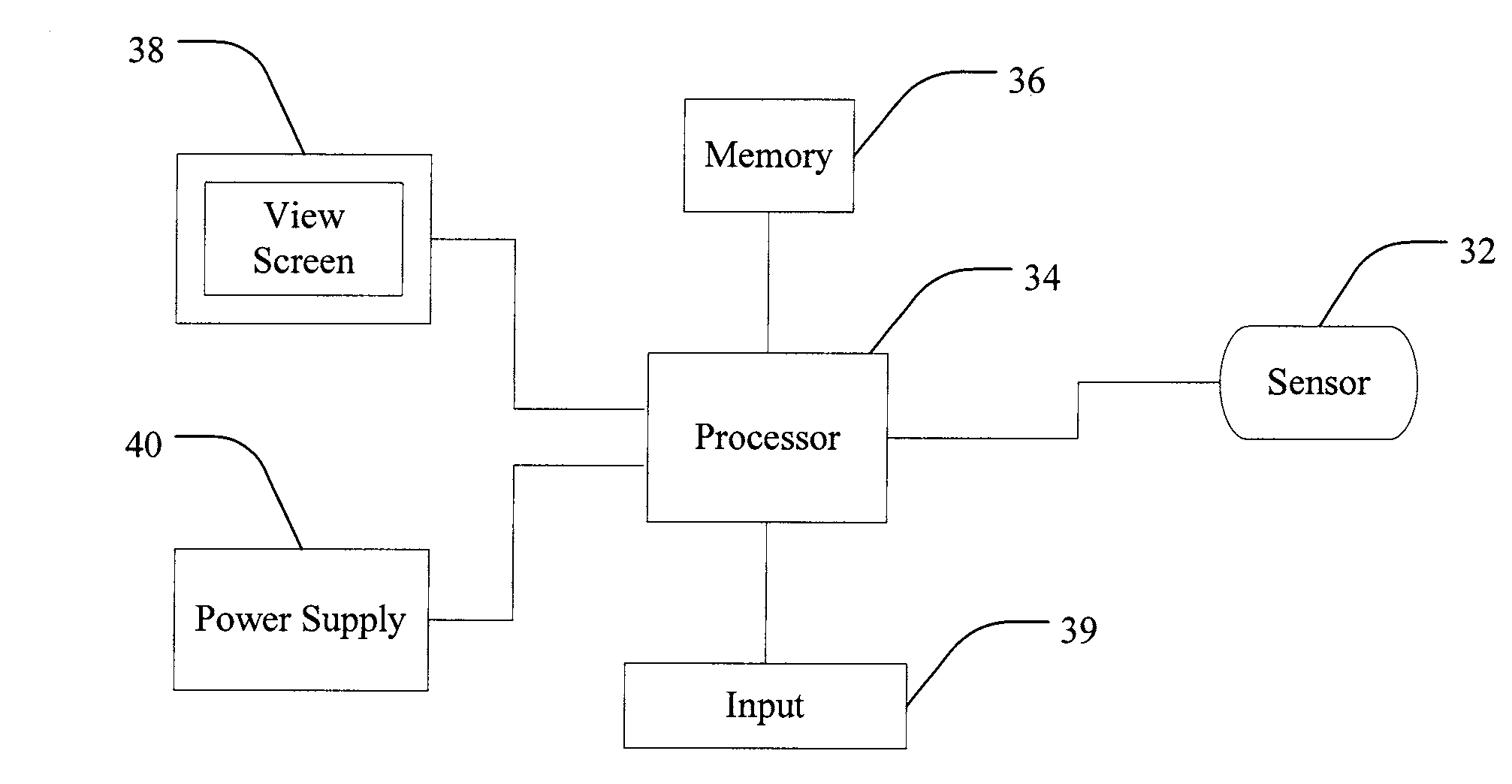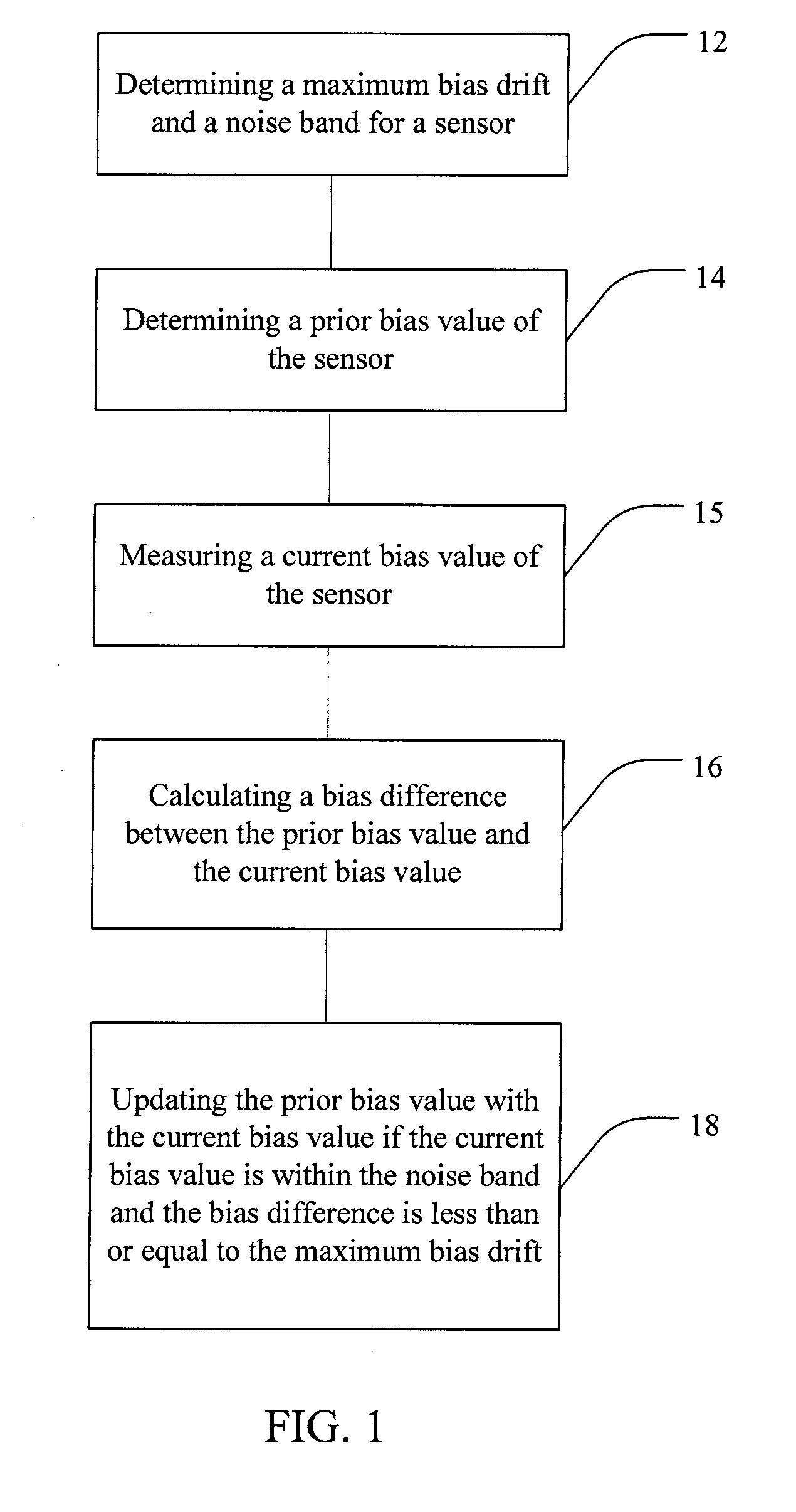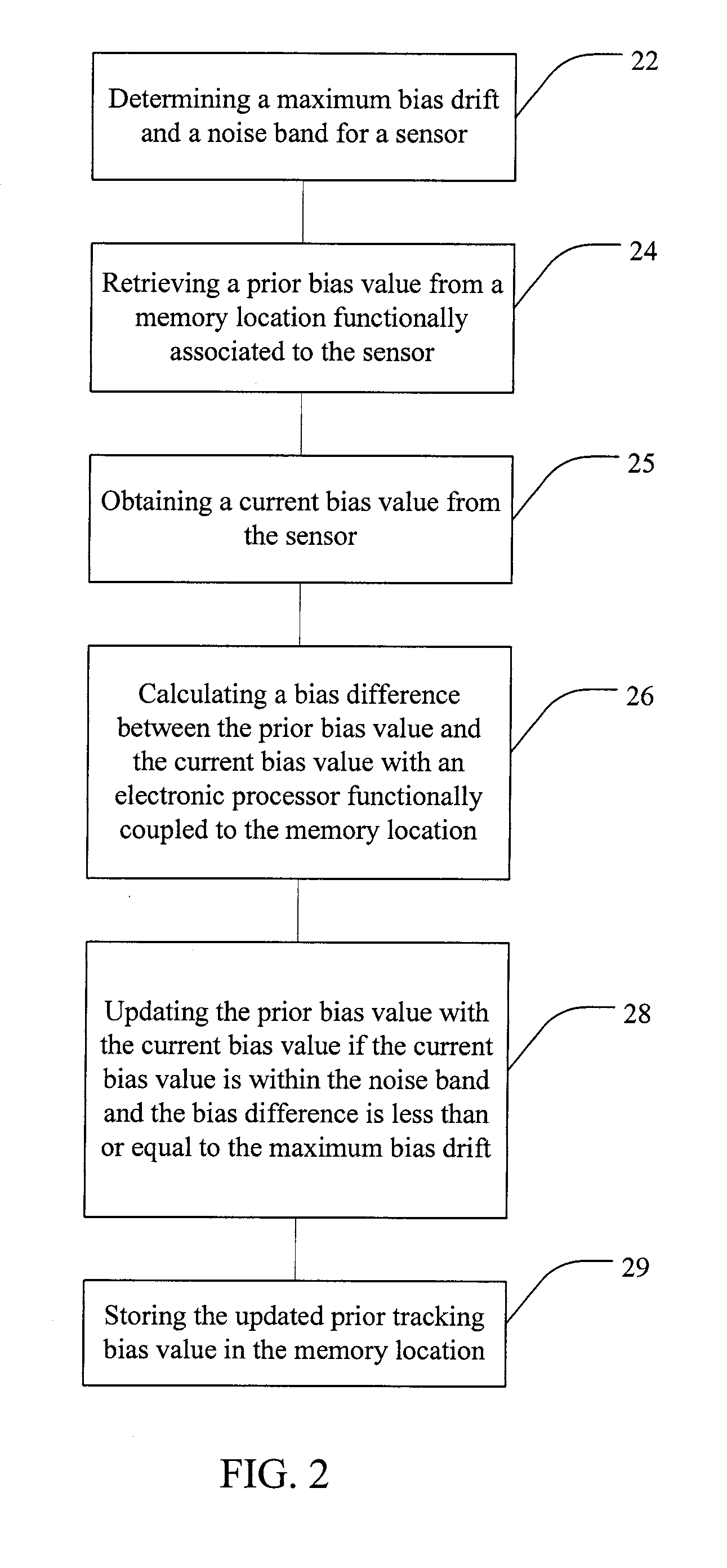State Estimator for Rejecting Noise and Tracking and Updating Bias in Inertial Sensors and Associated Methods
a state estimator and noise rejection technology, applied in surveying and navigation, instruments, navigation instruments, etc., can solve problems such as unbounded error growth, inability to use inertial measurement, and limited application of inertial sensors
- Summary
- Abstract
- Description
- Claims
- Application Information
AI Technical Summary
Benefits of technology
Problems solved by technology
Method used
Image
Examples
examples
Experimental Setup
[0046]Equipment
[0047]A 1.7 g Analog Devices ADXL203 MEMS two axis accelerometer is used in the following experiments. A 5 V power supply is used giving a nominal scale factor of 1000 mV / g. The value of the scale factor for this power supply typically varies by less than 2%. Given this level of accuracy in the scale factor calibration, the nominal value is assumed correct. 100 nF filtering capacitors are used to set the nominal bandwidth of the sensor output at 50 Hz and the nominal noise floor at 1.0 mg rms (1.0 mV rms), with a peak-to-peak noise estimate of 6 mg (6 mV).
[0048]A THK linear bearing rail and slider are used to constrain motion to one dimension and allow the data processing to focus solely on sensor-level noise rejection and bias estimation without the additional complications of higher dimensional navigation solutions. It is verified that the precise fit of the slider on the rail constrained their relative motion sufficiently that no measurable change...
PUM
 Login to View More
Login to View More Abstract
Description
Claims
Application Information
 Login to View More
Login to View More - R&D
- Intellectual Property
- Life Sciences
- Materials
- Tech Scout
- Unparalleled Data Quality
- Higher Quality Content
- 60% Fewer Hallucinations
Browse by: Latest US Patents, China's latest patents, Technical Efficacy Thesaurus, Application Domain, Technology Topic, Popular Technical Reports.
© 2025 PatSnap. All rights reserved.Legal|Privacy policy|Modern Slavery Act Transparency Statement|Sitemap|About US| Contact US: help@patsnap.com



